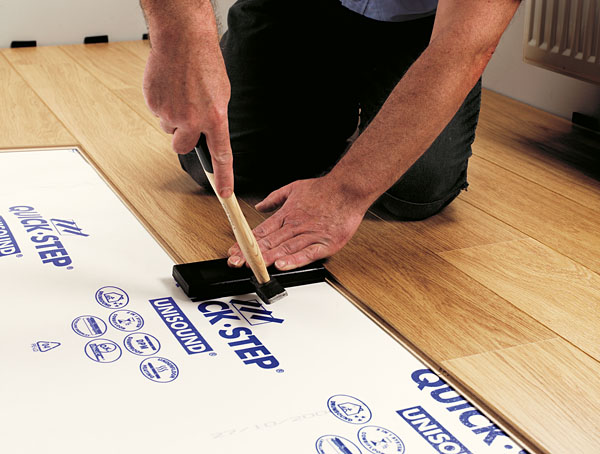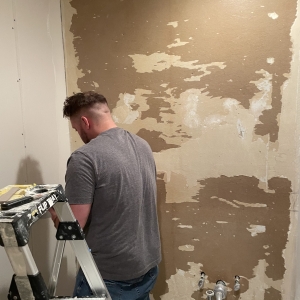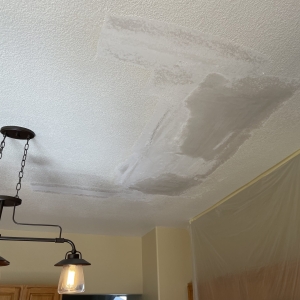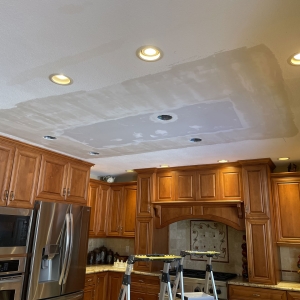Flooring Installation
FLOORING
Flooring is the general term for a permanent covering of a floor, or for the work of installing such a floor covering. Floor covering is a term to generically describe any finish material applied over a floor structure to provide a walking surface.
When choosing flooring options, consideration should be given to the function of the room, durability, installation required (professional or D.I.Y), maintenance, and repair. considering your unique needs will help you make a selection that best matches performance, design, and budget.

LEARNING CENTER
Whether you want to customize a basic builder design, renovate an old home, or learn how to remodel a kitchen or bathroom, you can create your dream home with smart planning and A Patch to Match.
For specific flooring ideas, click on one of the following links:
Luxury vinyl tiles, such as Allure, are available in self-stick adhesive tiles and floating interlocking planks for easy installation. Vinyl is an economical alternative to other flooring without sacrificing style.
Different Types of Flooring Material
The choice of material for floor covering is affected by factors such as cost, endurance, noise insulation, comfort and cleaning effort. Some types of flooring must not be installed below grade (lower than ground level), and laminate or hardwood should be avoided where there may be moisture or condensation.
TILE & STONE
Hard tile surface coverings are available in ceramic, porcelain, and natural stone. Ceramic and porcelain tiles are a popular choice of flooring due to their aesthetic appeal, as well as their durability and easy care. Glazed ceramic tile resists stains, odors and dirt. Porcelain clays are denser and so less porous than ceramic. This makes porcelain tile harder and more impervious to moisture than ceramic tile. Due to its through-body composition, it is considered more durable and better suited for heavy usage. Chip the ceramic tile and you find a different color underneath the top glaze. Chip the porcelain and the color keep on going. While ceramic is less dense than porcelain, it’s also far easier to cut – by hand, wet tile saw, or snap tile cutter. Porcelain is more brittle and may require a more experienced hand to cut properly. All other factors equal, ceramic tile is less expensive than porcelain. Both ceramic and porcelain flooring come in multiple sizes, shapes, colors, glazes and designs. A properly installed tile floor will outperform and outlast nearly any other floor covering product. On the con side, they are cold and hard on the feet, glossy finishes are slippery when wet, and grout can discolor and is hard to maintain.
NATURAL STONE
Has an earthy but elegant look and appeal. Each piece is a unique creation and nearly indestructible. Stone is quarried from the ground, and includes slate, granite, marble, travertine, and limestone. Stone will be the most expensive of the tile flooring options and require good maintenance. Granite is the strongest, with slate coming a close second – although it tends to chip at the tile edges. With the exception of granite and some slate, natural stone is quite porous, and needs to be treated with a sealing agent periodically to protect its surfaces and the grout lines. Tumbled or honed finishes give good traction. Glossy finishes are slippery when wet, and must be polished regularly. Some polished materials, such as marble, can scratch easily. Stone is heavy, and may need a stronger subfloor.
WOOD
There’s no substitute for the warmth and natural beauty of real wood. It looks great and certainly adds value to the home. Wood flooring comes in dozens of styles and sizes, but there are only two basic types: solid wood and engineered wood. Traditional solid-wood flooring is exactly what you’d expect: each floorboard is milled from a piece of solid wood. Engineered-wood is composed of three or more wood layers glued together into long planks, with a top layer composed of a thin solid-wood veneer. Planks snap together and “float” over an underlayment–no nailing or gluing – and they can be laid directly over most existing floors. Engineered floors are more environmentally friendly and less expensive than solid floors. Both types of flooring come in a wide variety of colors and wood species. If you are considering a “greener” approach, look at reclaimed hardwood, barn wood, or responsibly harvested flooring products – certified by the Forest Stewardship Council (F.S.C). Also, make sure stains or finishes will not emit VOC’s. Hardwood floors have been a staple in homes for centuries, but the use of reclaimed/recycled wood is increasingly popular. The warm, worn-in look of salvaged wood flooring with its unique imperfections is esthetically appealing and eco-friendly.
LAMINATES
Laminate is also a very popular choice for kitchen flooring. They are often less expensive than hardwood, stone or tile, but the popularity of laminates is not all about cost. Laminate flooring was developed in Sweden in the 1980s, and it’s come a long way since then. Today’s laminate floors use sophisticated technology to capture the look of real woods and stones, as well as unique and unexpected materials like metal, concrete, and weathered wood. High-end laminates offer a textured appearance, so the finish looks realistic from up close as well as from afar. Interlocking laminate flooring can easily be installed over existing wood, concrete, or vinyl flooring, only requiring thin foam padding to act as a moisture barrier – “floating floors.” The ability to easily “remove” them and reinstall elsewhere lends a recycle aspect to their use. Along with stylish designs, laminate floors offer high durability and versatility, which make them an effective alternative to more expensive hardwoods.
Some of the most popular choices for kitchen flooring right now are “rapidly renewable species” – cork, bamboo and eucalyptus. These products used in flooring grow back quickly and harvesting it isn’t detrimental to the environment.
BAMBOO
Bamboo has become another popular player in flooring options. It is actually a grass that shares similar characteristics to hardwood. Another sustainable green option, when properly harvested (around six years old), the root system remains intact, allowing the bamboo to grow again to its full size. Certain types of bamboo (natural, un-carbonized and strand woven) can be extremely strong, hard and durable. Usually light in color, it is available in many hues. It is versatile, sustainable, price-competitive, and easy to maintain and install.
CORK
A very exciting and eco-friendly option today is cork flooring. Only the bark is harvested, the tree continues to flourish as it grows back. The waste from the production of corks is transformed into flooring – truly renewable and sustainable. The same material used to plug your favorite wine combines the beauty of nature, noise reduction, antimicrobial properties, insect resistance, fire retardant, and can leave you feeling like you’re walking on air. It has actually been used in libraries and churches since the turn of the century. Offered in a variety of shades and textures, including “look-a-likes” cork is a warm, soft, durable, and HYPOALLERGENIC option for your kitchen flooring. Normally you can find cork sold in tiles, but is also available in sheets. An important aspect of cork flooring prep is the application of the sealant. This is often done before you purchase – it helps to prevent scuffing and other abrasions that can develop over time. The sealant also helps keep moisture out.
VINYL
Vinyl flooring is nothing new to home kitchen design – but today’s vinyl is not your grandmother’s kitchen flooring. Now grouped in a category called “resilient flooring,” they are far more durable, easy to maintain, and wear-resistant. In addition to offering better performance, they come in a huge variety of colors, patterns, and trendy designs, with many high-end styles impressively mimicking the look and textures of popular materials such as real ceramic tile, stone, and wood. Available in sheets, tiles, or planks, these floors are highly resistant to mold, mildew, and moisture. Luxury vinyl tiles, such as Allure, are available in self-stick adhesive tiles and floating interlocking planks for easy installation. Vinyl is an economical alternative to other flooring without sacrificing style.









